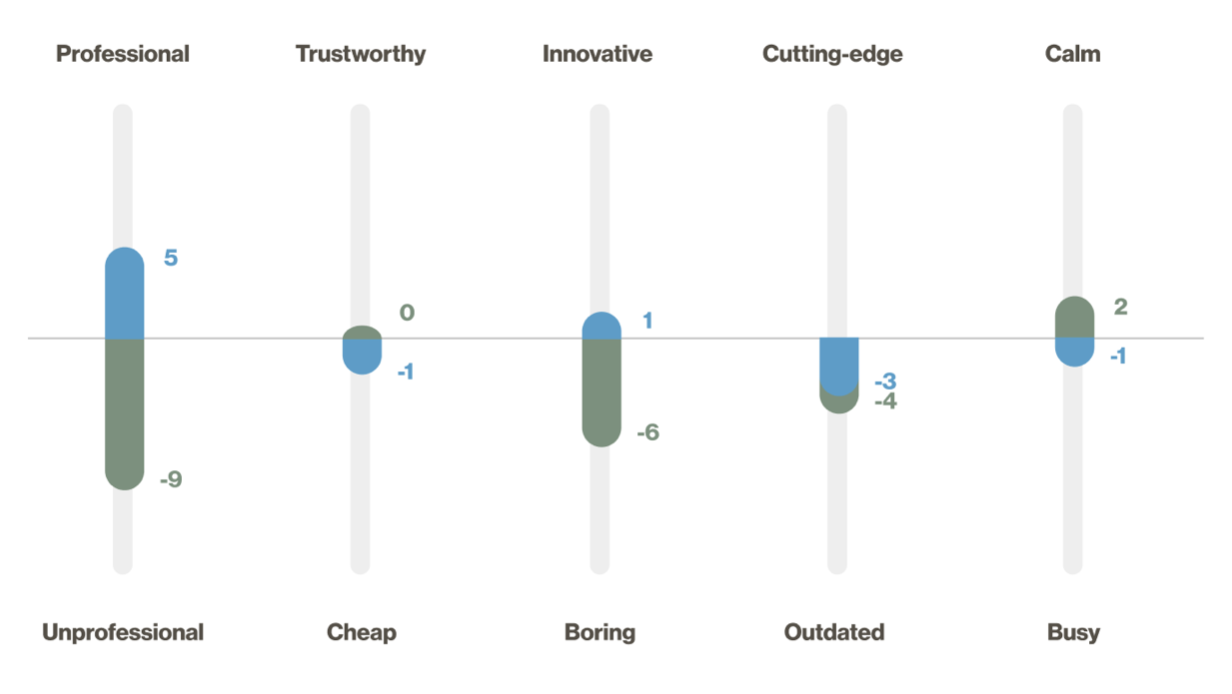Introduction
Let's get real—people are not just logical, they're emotional. A well-functioning product might tick off practical boxes, but what turns users into advocates is how a product makes them feel. Desirability testing is a controlled vocabulary test of software's or brand’s look & feel. It can help you capture user preferences and evaluate the emotional and aesthetic appeal of a product.
Why conduct desirability testing
Desirability testing gives you quantifiable data on those subjective attributes that users might otherwise struggle to articulate. Here are some examples of user research questions that can be answered using desirability testing:
- Emotional Resonance: How does the user feel when interacting with the product? Is it eliciting the intended emotional response?
- Branding Alignment: Does the product's aesthetic and user experience align with the brand’s emotional and visual identity?
- Comparative Analysis: When presented with different design options, which one do users find more desirable and why?
- Target Audience Alignment: Is the product’s design and experience resonating with the intended target audience, or is it appealing to an entirely different demographic?
Getting It Done: The Execution
Desirability testing is one of the fastest user research techniques, and you can combine it with other methods like user interviews, usability testing, etc. You can use Useberry, Typeform or any other tool of your choice to conduct desirability testing.
The test itself is very simple — you give users the list of product reaction words and ask them to select those that best describe the design (normally three out of them). Next to the words, you can simply show the screenshot of your screen(s) or brand attributes.
This extensive and comprehensive list of 118 product reaction words can be used for the study. You will see that it includes words that display visual appeal, copy used, functionality, user experience as a whole…
Now, choosing your vocabulary list is an art in itself. Aim for a balanced mix, like a well-crafted playlist. A list of 118 product reaction words may sound like overkill, but the words are there for a reason'. Here are some pro tips for list selection:
- Tailor the list based on what you're keen on measuring if it's visual allure, ditch words like 'time-consuming' that relate to performance
- Align the words with core brand values
- Use a similar number of positive, neutral and negative words
- Less can be more. Aim for 25 words or fewer, ideally around 10
- Randomize the order in which the words are presented
- Add your own words to the list if needed. But be very careful when doing that so that you don't add a word that can be interpreted as both positiva and negative. (Like "goofy")
When it comes to the number of participants in desirability testing, think of it this way: one is better than zero, but a hundred is leagues ahead. While even a single participant can provide valuable qualitative feedback, ramping up the numbers—especially if you're looking for quantitative insights—gives your data the kind of robust, statistical clout that makes your findings both compelling and credible. So, in the world of desirability testing, the more the merrier indeed!
Data Analysis
With the help of Useberry (or Typeform, or any other tool) we suggest that you:
- Use percentages to report the number of times each word was selected
- Check if different user groups perceive the software differently (for example, there may be a difference between the age groups)
- Compare sets of words chosen to describe different options (if applicable)
- Think about why users chose a specific word, and give special attention to the words that are most frequent, least frequent, or came as a surprise for some reason
Did You Know?
The first-ever desirability test was coined as "Microsoft reaction cards" back in 2002. And now you’re carrying the torch.
